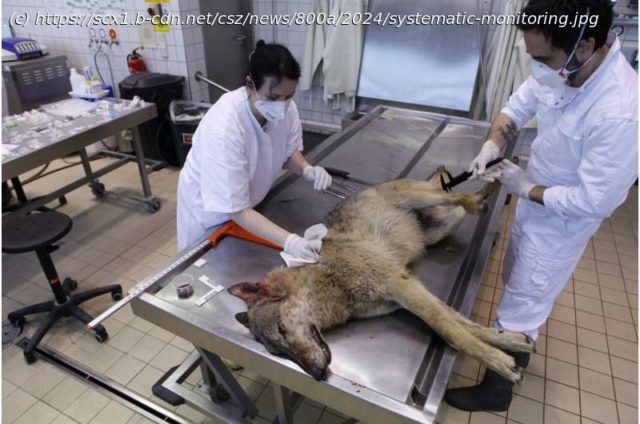At the turn of the millennium, gray wolves returned to Germany after 150 years and subsequently established territories in many parts of the country. But coexistence harbors challenges—for both humans and animals. Since 2006, almost all gray wolves found dead in Germany have been examined at the Leibniz Institute for Zoo and Wildlife Research (Leibniz-IZW) in order to assess their health status and determine the cause(s) of death.
At the turn of the millennium, gray wolves returned to Germany after 150 years and subsequently established territories in many parts of the country. But coexistence harbors challenges—for both humans and animals. Since 2006, almost all gray wolves found dead in Germany have been examined at the Leibniz Institute for Zoo and Wildlife Research (Leibniz-IZW) in order to assess their health status and determine the cause(s) of death.
Recently, the 1000th wolf lay on the dissecting table at the Leibniz-IZW. The female animal died as a result of a road accident—by far the most common unnatural cause of death for gray wolves in Germany. The case speaks volumes about the successful but challenging return of gray wolves.
After gray wolves returned to Germany shortly after the turn of the millennium, the Leibniz-IZW began analyzing the health status and causes of death of the wolves. For almost 20 years, every gray wolf found dead in Germany underwent this «dead wolf monitoring» in order to assess the health status of the established population and the causes of death.
Initially, only a few animals were found, but now a three-digit number of wolves end up on the dissection table of the wildlife pathology unit at the Leibniz-IZW every year. There are now so many that only every second wolf that dies in road traffic accidents can be examined. The latest case, a pregnant female wolf that died in a road traffic accident, brings the total to 1000 since the program began.
«These figures alone show that the return of the gray wolves is a success story from an ecological perspective», says Prof Dr. Heribert Hofer, Director of the Leibniz-IZW. «The many dead wolves found in various parts of Germany demonstrate that wolf territories have been established in many places.»
The examinations also show that the population is healthy. The female wolf, which was the 1000th case to arrive at the Leibniz-IZW, was pregnant with six cubs, which symbolizes the successful reproduction of the carnivores, says Hofer.
The female wolf died as a result of a road accident. «This is by far the most common cause of death. Our data show that around three quarters of dead wolves we dissect die in traffic collisions, mostly with cars on rural roads or motorways», says Dr. Claudia Szentiks, pathologist in charge of the wolf project at the Leibniz-IZW.
Gray wolves live in large territories that are criss-crossed by numerous roads and railway lines in the German landscape, which the animals have to cross almost daily.
Домой
United States
USA — IT Systematic monitoring: Gray wolf autopsy findings since the species' comeback to Germany






